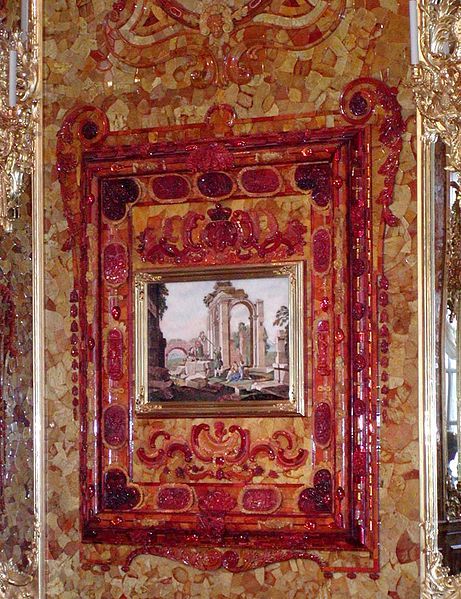About
One of history's great lost treasures, the spectacular Baroque Amber Room once dazzled visitors to the czar's Winter House in St. Petersburg, where more than six tons of amber were arranged against mirrors and gold leaf into an enormous, golden gallery.
For most of history, the area formerly known as Prussia was the world's most significant producer of amber, and it is still associated with the area today. The golden-colored fossilized tree sap can actually be found in locations all around the world, but has been famed and traded in Eastern Europe since at least Roman times.
Designed between 1701-1711, the original Amber Room was first installed in Berlin, then given as a gift to Peter the Great, moved to Russia and expanded until it covered an estimated 180 square feet. In 1755 it was again moved, this time to the Catherine Palace in Tsarskoye Selo, near St. Petersburg.
During WWII, desperate officials at the Catherine Palace hid the national treasure behind wallpaper, in an attempt to stave off the art-crazed looters of the incoming Nazi army. It was, however, all for naught and the Nazis promptly made off with crates full of amber, and brought it back to Germany where it was triumphantly exhibited at Königsberg Castle.
That is, it was triumphantly exhibited until they too felt the other shoe drop, and this time officials ripped out the magnificent panels and hid them away...somewhere.
Since the end of WWII, historians, art lovers, and treasure hunters alike have sought the lost Amber Room, looking in silver mines and shallow waters, investigating stories of shipwrecks in the Baltic Sea and secret caves in the German countryside. It has never been found.
Most experts today agree that the room is most likely gone forever, lost in the fires that consumed Königsberg Castle after the fall of Nazi Germany. The site where the Königsberg Castle once stood is now covered by a massive and strange building known as the "House of Soviets", built in 1960, but incomplete and empty to this day. The space under the property has never been thoroughly investigated, so some mystery remains.
In the meantime, reconstruction efforts began in 1979 at the Catherine Palace, but it was not until 2003 that the new version was revealed. Based on old depictions and photographs, the new Amber Room is believed to hone more closely to the original installation as it would have been seen in Berlin.
Related Tags
Community Contributors
Published
February 10, 2013






































